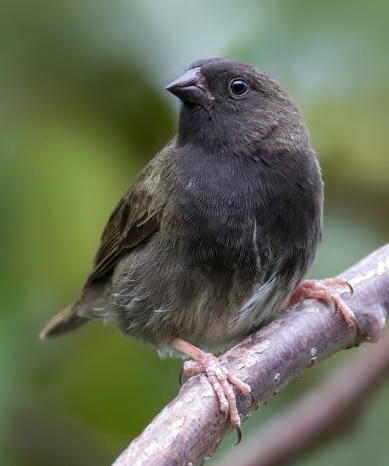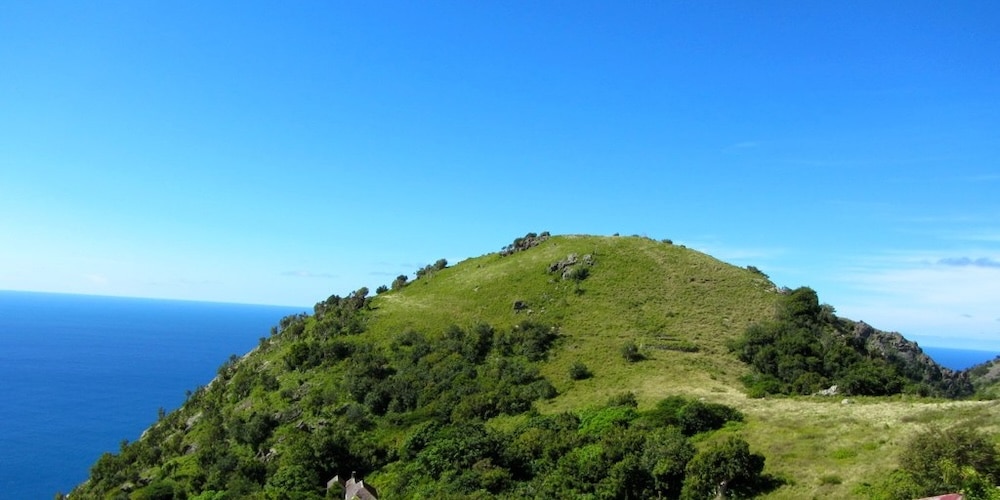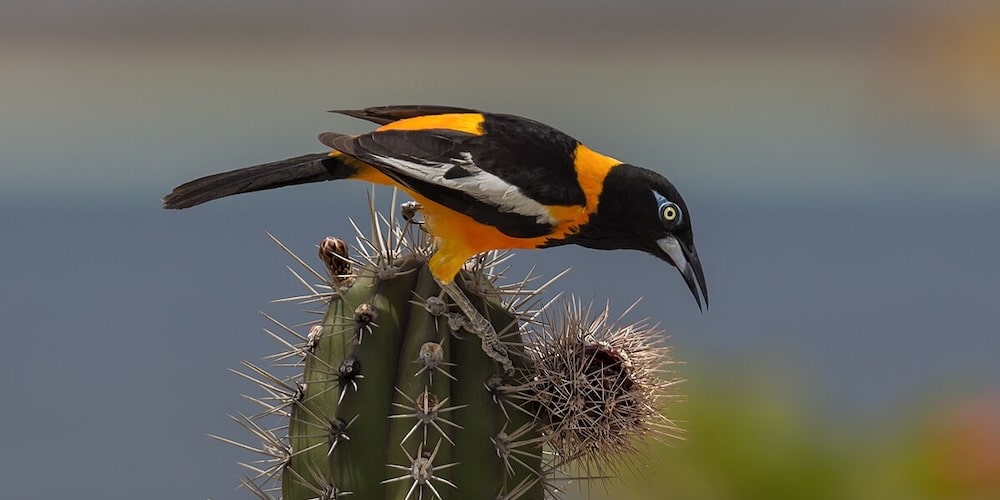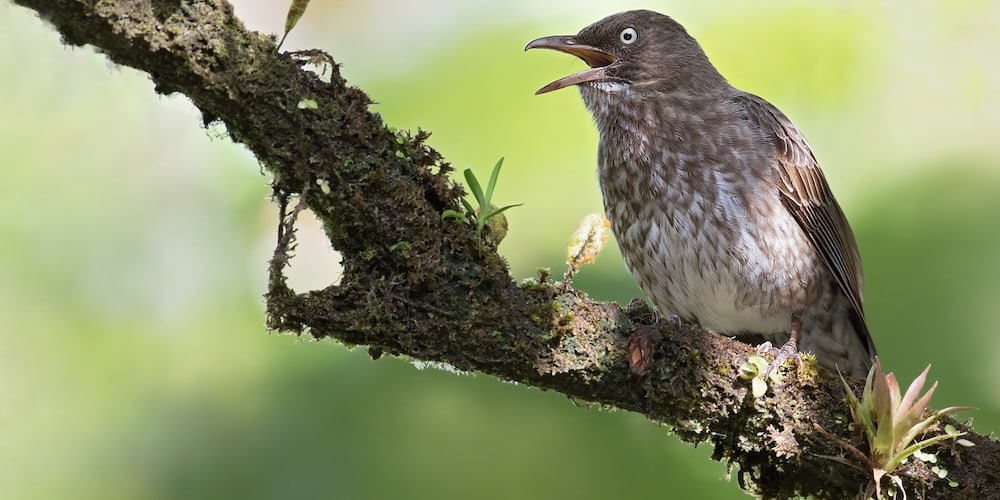Caribbean Netherlands

The Caribbean Netherlands is a geographic region of the Netherlands located outside of Europe, in the Caribbean, consisting of three special municipalities. These are the islands of Bonaire, Sint Eustatius, and Saba, as they are also known in legislation, or the BES islands for short. The islands are officially classified as public bodies in the Netherlands and as overseas territories of the European Union; as such, European Union law does not automatically apply to them. Bonaire (including the islet of Klein Bonaire) is one of the Leeward Antilles and is located close to the coast of Venezuela. Sint Eustatius and Saba are in the main Lesser Antilles group and are located south of Sint Maarten and northwest of Saint Kitts and Nevis. The Caribbean Netherlands, which should not be confused with the more comprehensive Dutch Caribbean, has a population of 30,397.
Bonaire covers 288 km2 (111 square miles), Sint Eustatius covers just 21 km2 (8 square miles) and Saba covers 13 km 2 (5 square miles). Their combined population is a little over 31,000 people.
Bonaire is part of the ABC islands within the Leeward Antilles island chain off the Venezuelan coast. The Leeward Antilles have a mixed volcanic and coral origin. Saba and Sint Eustatius are part of the SSS islands within the Leeward Islands. They are located east of Puerto Rico and the Virgin Islands. The locals (French, Spanish, Dutch and the locally spoken English) consider them part of the Windward Islands, although, in the international English language, the Windward Islands refer to other islands further south. These two islands are of volcanic origin and hilly, leaving little ground suitable for agriculture. The highest point is Mount Scenery, 2,910 feet, on Saba. This is the highest point in the country and in the entire Kingdom of the Netherlands.

Saba’s Hilly Terrain – ©Richie Diesterheft, Chicago CC BY-SA 2.0 via Wikimedia Commons
The islands of the Caribbean Netherlands enjoy a tropical climate with warm weather all year round. The Leeward Antilles are warmer and drier than the Windward islands. In summer, the Windward Islands can be subject to hurricanes.
Forest cover is around 6% of the total land area of the Caribbean Netherlands, equivalent to 1,910 hectares of forest, none of it is primary forest. Around 17% of the forest area was found within protected areas.
Birding the Caribbean Netherlands
The Caribbean Netherlands consist of a number of islands and islets: Bonaire, Saba & Saint-Eustatius being the populated ones.
Most of the 200 species of birds that have been officially recorded for Bonaire, with a few notable exceptions, are affiliated with xerophytic and thorny scrub and cactus wilderness type vegetation. Exceptions are the water-dominated habitats: coastlines, inland saltwater lakes (salinas); and mangrove marshes that harbour many species of egrets, herons, and other species of marsh and shorebirds. Exceptional birding can be expected if the island is under the influence of a heavier than normal year of rainfall (average, 22 inches); when freshwater impoundments can attract many rare and unusual migrants from both North and South America.
Woodland specialties dominate the northern half of the island where scrub-covered and wooded hills form the 3800-hectare Washington/Slagbaai National Park (small entrance fee required). This area forms the centre of the nesting range of the endangered Yellow-shouldered Parrot Amazona barbadensis rothschildi, which is often confused with Caribbean or Brown-throated Parakeet Aratinga pertinax xanthogenius. Look for the Mourning Dove-sized parakeets, with similar-sized elongated tail feathers, brilliant orange-yellow faces and heads, and the Yellow-shouldered Parrots that are the size of Rock Doves, with similar short tails, and the same green colour on both upper and lower body with small amounts of yellow on the sides of the face, and on bend of the wing.

Troupial Icterus icterus – ©Betty Wills CC BY-SA 4.0 via Wikimedia Commons
Other notables of the woodlands, which are also often found around the hotels and residential yards, are Bananaquit Coereba flaveola; very Colourful orioles of two species, Troupial Icterus icterus, which is orange and black, and Yellow Oriole Icterus nigrogularis. Tropical Mockingbird Mimus gilvus and the very common Black-faced Grassquits Tiaris bicolor abound. One site where your chances of success at finding White-tailed Nightjar Caprimulgus cayennensis is almost 100% is Microwave Hill that overlooks the village of Rincon, in the northern section of the island. Bring a flashlight, and here, after dark, the nightjars come in to feed on moths that are attracted to the 4 street lamps, and often can be seen perched on the fence that borders the microwave tower. Otherwise, driving along dirt roads after dark may reveal these secretive goat-suckers, with fiery-red glowing eye-shine.
Away from the developed parts of the islands are such stealthy species as Smooth Flycatcher Sublegatus modestus; Caribbean Elaenia Elaenia martinica; Brown-crested Flycatcher Myiarchus tyrannulus; Pearly-eyed Thrashers Margarops fuscatus and larger and more conspicuous birds like the Crested Caracara Polyborus plancus in the cactus hillsides, Ospreys Pandion haliaetus along the coasts throughout the island, and Bonaire’s signature bird, the Greater Flamingo Phoenicopterus ruber, which can be seen both north and south. Caribbean Grackle Quiscalus lugubris can easily be found nesting in a large ficus tree in front of the Antillean Rice Company, and it is interesting to note that they have a limited distribution here in the southern Caribbean and ours probably are from the Venezuelan coastal area, and appear to be increasing here, also, these grackles actually have a pleasant call unlike most grackle species.

Pearly-eyed Thrashers Margarops fuscatus – ©Dubi Shapiro
You will find five species of doves and pigeons, six, if you count Rock Dove, here on Bonaire. Most of them are of limited geographical distribution, which makes them sought-after species for most intense birders. Very large and all dark is the Red-necked or Scaly-naped Pigeon, Columba squamosa, which should be easily seen as you drive through the countryside, and is only found in the Greater and Lesser Antilles islands. A bit smaller with conspicuous white wing patch is the Bare-eyed Pigeon Columba corensis; which is only found on the arid Caribbean islands along the Colombian and Venezuelan coasts. A bit smaller and appearing most like Mourning Dove from North America is the Eared Dove, Zenaida auriculata; however, Eared Dove does not have elongated central tail-feathers and white corners, but equal length tail-feathers and cinnamon-coloured corners.
Our smallest, and probably the most common bird on Bonaire is Common Ground Dove Columbigallina passerina; which is sparrow sized with an attractive, scaly-patterned throat, and has a wide geographical range throughout the tropical regions of the Caribbean and Central and South America.
The southern end is the driest section of the island and consists of the salt works and a breeding preserve of 55 hectares established for the flamingos whose numbers can vary from a few thousand to near twenty thousand, depending on several variables. Also, along the southern coasts and inland where water accumulates, can be found many species of waders and shorebirds, such as both colour morphs, normal and white, of Reddish Egret Egretta rufescens; Tricolored Herons Egretta tricolor; Green Heron Butorides virescens; Great Egret Ardea alba; Snowy Egret, Egretta thula and Great Blue Heron Ardea herodias. Many of the smaller shorebirds, both Greater and Lesser Yellowlegs, dowitchers, sandpipers, plovers, including the rare Collared Plover Charadrius collaris from South America, are here in winter or on migration.
In the mangrove marshes, along the eastern coast, one can find many of the previously mentioned water dwelling birds and roosting Magnificent Frigatebirds Fregata magnificens; and Brown Pelicans Pelecanus occidentalis; neither of which nest on Bonaire. Also, it is the most likely site for both species of night herons, and Little Blue Heron Egretta caerulea. This is the area to scrutinise carefully, especially around dawn for many rare migrants that use the mangrove marsh for feeding and resting.
Other special phenomena that birders should be aware of are the migration seasons, April/May for the spring migrants going north from their wintering grounds in South America, and the fall, September/October, when migrants are leaving their breeding grounds in North America on their way through the Caribbean to their wintering locals. During the spring, the eastern deciduous forest birds, come through Bonaire in their breeding colours, especially the males, and add excitement to days afield when local birds are complemented by these Colourful visitors. It is interesting to note that almost all the breeding warblers of north-eastern United States have been recorded here on Bonaire, and a complete list of sightings during a migratory season reads like a Who’s Who of birds from eastern North America. Like birding anywhere along migration paths, one never knows what will show up, and Bonaire offers many surprises for visitors who mistakenly think that Bonaire is only for scuba divers.
The birding section is based on the submission of contributor, Jerry Ligon. He sadly passed away September 2015.
-
Number of bird species: 287
(As at March 2025)
-
Avibase
PDF ChecklistThis checklist includes all bird species found in Bonaire, Sint Eustatius and Saba , based on the best information available at this time. It is based on a wide variety of sources that I collated over many years. I am pleased to offer these checklists as a service to birdwatchers. If you find any error, please do not hesitate to report them. -
E-Bird
PDF ChecklistThis checklist is generated with data from eBird (ebird.org), a global database of bird sightings from birders like you. If you enjoy this checklist, please consider contributing your sightings to eBird. It is 100% free to take part, and your observations will help support birders, researchers, and conservationists worldwide. -
Wikipedia
Annotated ListThis is a list of the bird species recorded in the Netherlands Antilles. The avifauna of the Netherlands Antilles include a total of 286 species, of which five have been introduced by humans and 22 are rare or accidental. Four species are globally threatened.
-
Birds of Aruba, Bonaire, and Curaçao: A Site and Field Guide
| By Jeffrey V Wells, Allison Childs Wells & Robert Dean | Comstock Publishing Associates | 2017 | Paperback | 474 pages, 59 plates with colour illustrations; colour photos, colour maps | ISBN: 9781501701078 Buy this book from NHBS.com -
Birds of Aruba, Curaçao and Bonaire
| By Bart De Boer, Eric Newton and Robin Restall | Helm | 2020 | Paperback | 176 pages | 70 colour plates | 5 colour photos | 4 colour maps | ISBN: 9781472982568 Buy this book from NHBS.com -
Checklist of the Birds of Aruba, Curacao and Bonaire
| By TG Prins, JH Reuter, AO Debrot, J Wattel and V Nijman | NOU | 2009 | Hardback | 268 pages, maps, colour photos | ISBN: #187100 Buy this book from NHBS.com -
The Birds of the West Indies
| By Guy M Kirwan, Anthony Levesque, Mark W Oberle & Christopher J Sharpe | Lynx Edicions | 2019 | Flexibound | 00 pages, 1600+ colour illustrations, 650+ colour distribution maps | ISBN: 9788416728176 Buy this book from NHBS.com

Birds of the West Indies
AndroidThis bilingual, mobile field guide for the West Indies includes all 415 bird species of Puerto Rico and the northeastern Lesser Antilles: Virgin Islands, Anguilla, Saint Martin (Sint Maarten), Antigua and Barbuda, Montserrat, Sint Eustatius, Saint Kitts and Nevis, Saint Barthélemy (St. Barts), and Saba.
Birds of the West Indies
Apple iOS |Explore the vibrant Caribbean islands with Birds of the West Indies – your pocket guide to Caribbean birdwatching!Organisations-
Bonaire Birding
Facebook Group -
Dutch Caribbean Nature Alliance (DCNA)
WebsiteYour Regional Partner for Nature Conservation in the Dutch Caribbean -
Saba Conservation Foundation
WebsiteThe Saba National Marine Park (SMP) was established in 1987 with the objective to preserve and manage Saba's marine resources. The SMP was not developed to repair a damaged environment but rather to ensure the continued quality of an extraordinary resource for the benefit and enjoyment of everyone
Reserves-
*Protected areas of Bonaire
InformationSatellite ViewParks and reserves -
Kralendijk Sewage Ponds
InformationSatellite ViewThe sewage ponds of Kralendijk might not be the prettiest area of Bonaire, but it sure is a hotspot for birdwatching with more than 130 bird species recorded. -
NP Bonaire - Washington Slagbaal National Park
WebsiteSatellite ViewAccording to the most recently data, 203 species of birds have been observed on the island, but this includes all casual visitors, which make up quite a large part of that number. What makes the birding in the National Park so attractive is the fact that there is such a variety in a comparatively small area, all which are easy accessible…
Sightings, News & Forums-
eBird
SightingseBirding This Month
Guides & Tour Operators-
Bonaire Bird Tours
Local Tour OperatorHalf-day tours -
HopiBonaire
Local Tour OperatorBonaire is a true bird paradise where most birds can be easily observed. During your birdwatching excursion with HopiBonaire -
Outdoor Bonaire
Local Tour OperatorBonaire Birdwatching Nature Tour
Trip Reports-
2014 [02 February] - Ben & Nelly de Kruijff
ReportList with photos -
2017 [04 April] - Max Berlijn
PDF ReportAnnotated List -
2019 [01 January] - Henk Hendriks
PDF ReportBonaire harbours a limited number of species and for me the interesting species (lifers) were Yellow-shouldered Amazon, Pearly-eyed Thrasher and Caribbean Elaenia . It turned out that we saw the first two species in our garden on our first full day on the island. -
2023
ReportA year's journey of slow birding on Bonaire
Other Links-
-
Birds of Bonaire
WebsiteBonaire is a favorite of birdwatchers. Over 170 species of birds can be seen on the island, many of them clustered around Goto Lake, Pekelmeer, Cai and Dos Pos. Spotting each species depends to some extent on migration patterns and the weather -
Bonaire Birdwatching
WebsiteBonaire has no endemic species of birds, however, there are a number of subspecies, or geographical races that are restricted to just the islands of Aruba, Bonaire and Cura
Fatbirder - linking birders worldwide...
Skip to content
